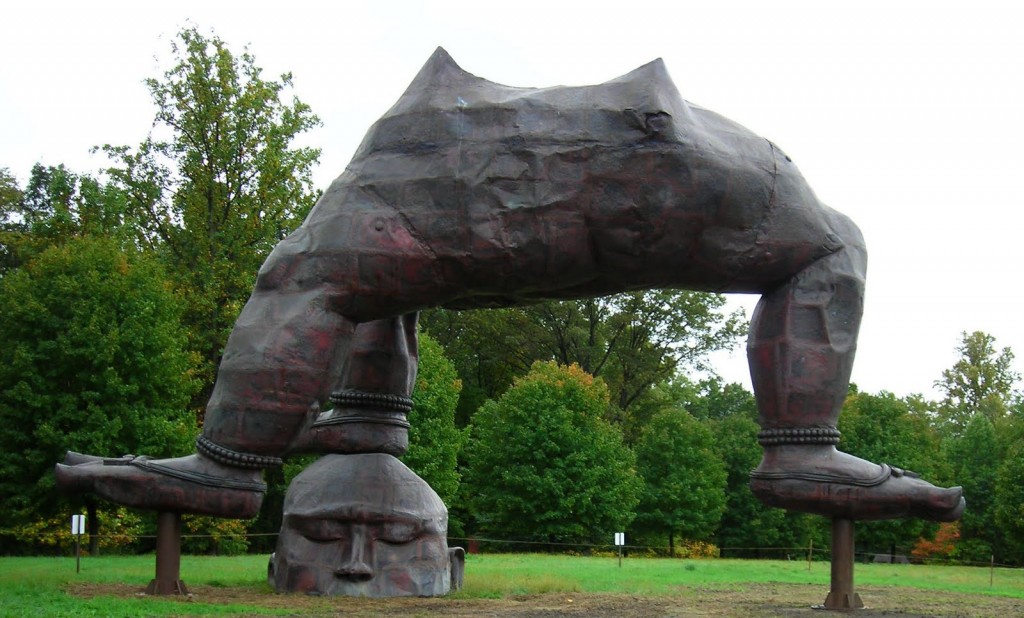
Lately, I’ve been reading Amod Lele’s blog, Love of All Wisdom. Lele has a doctorate from Harvard where he studied cross-cultural philosophy–an inevitable choice for him, given that his mother was raised as a Christian and converted to Buddhism, while his father was raised as a Hindu and converted to Marxism. Lele opted out of the philosophy job market, such as it is, and now works as an educational technologist for Boston University while further developing his philosophical ideas in his blog.
One of the things Lele writes about is the dialectic between ”ascent” and ”descent,” and the dialectic between ”integrity” and ”intimacy” as they are expressed in both Eastern and Western philosophy. It’s helpful to think of these contrasting concepts as poles at the ends of a continuum rather than as dichotomies. I’ve found these concepts to be useful in sorting out some of my own thoughts about the evolution of Buddhism. What follows is my own understanding of these ideas, and not necessarily Lele’s. I hereby absolve him of any and all responsibility for my mangling and misappropriation of his work.
Lele borrows the concepts of ”ascent” and ”descent” from Ken Wilber and, to a lesser extent, philosopher Martha Nussbaum. Ascent and descent refer to our relationship to the mundane world. Does ”Enlightenment” in Buddhism (or ”Salvation” in Christianity) have to do with leaving the mundane world behind and ascending to some pure, sacred realm (Nirvana, Heaven), or is Enlightenment to be found in the here-and-now particulars of our messy, everyday existence? This distinction partially parallels the distinction in Christian theology between transcendence (God exists beyond the world) and immanence (God is manifest in the world). I am uninterested in ”ascent” and ”descent” in reference to issues pertaining to spirituality versus materiality. I am interested in them to the extent that they reflect a stance of either disenchantment with everyday life and the desire to escape it to some better place beyond, or something which we might, for lack of a better word, call a ”spiritual life” that can be found by embracing the entirety of existence just as it is.
Lele borrows his ideas on intimacy and integrity from philosopher Thomas Kasulis. Kasulis’s interest in these terms is primarily philosophical, while mine is mostly psychological. I’m interested in whether the goal of the holy life is essentially one of purification and making oneself Good (integrity), or one of deepening one’s interconnection with all Beings and with life itself (intimacy). Ascent philosophies often emphasize integrity, while descent philosophies often emphasize intimacy, although, as Lele points out, that’s not always the case.
These distinctions are highly relevant to Buddhism’s evolution as it migrated from the Indian subcontinent to East Asia and then on to the West. Indian Buddhism was initially, like other contemporary Indian religions, a religion of integrity and ascent. The goal of the holy life was to purify oneself by ridding oneself of desire, aversion, and ignorance in order to leave cyclical existence behind. The method involved leaving one’s family, livelihood, and society behind, and going off into the forest to meditate. This emphasis on ascent was partially tempered a half-millennium later by Nagarjuna, who identified nirvana with cyclical existence, or samsara. Once Buddhism spread to China, however, it was reinterpreted through a Taoist filter, and moved even more towards the polarities of descent and intimacy. Thus in Zen, Nirvana is to be found within the mundane world of the ten thousand things (hence Zen master Joshu’s declaration that the meaning of Zen is the ”cypress tree in the garden”), and the holy life is not to be found through becoming pure, but by becoming intimate with all of life. The Bodhisattva ideal of saving all beings and not just oneself is a further nod towards interdependence and yet another step towards the polarity of intimacy. The move towards descent and intimacy is not yet complete, however, as the holy life still involves becoming a monk and withdrawing from family and profession.
The drift towards descent and intimacy reaches its apotheosis in contemporary Western Buddhism with its emphasis on lay practice. Lele points out that while in early Buddhism the interdependence of all things (their emptiness of self-existence, or sunyata) was seen as a reason for disenchantment with the mundane world, helping us to thereby let go of our grasp on things, modern Western Buddhism views interdependence as a positive good in and of itself. As such, recognizing our unity with all things essentially defines Awakening. Similarly, the modern Mindfulness movement encourages us to seek enchantment in the world, to more fully appreciate sensations, to learn to be in the moment and ”smell the roses.” The Buddha’s original instructions for disenchantment with the world are, in a way, completely stood on their head.
I began Buddhist study and practice within the Theravada tradition, but am now a Zen practitioner. Trying to sort through the continuities and discontinuities between these traditions, founded some 1,000 years and 2,000 miles apart, has not been an easy task. Is there ”one Dharma,” as Joseph Goldstein once proclaimed, with a single genotype underlying its phenotypical variations, or are there, in fact, many Buddhisms? If there are many Buddhisms, what is the right path of practice? This question has stirred minds for millennia. Historically there were arguments for the purity of early Buddhism as opposed to its later ”degenerate” forms, and arguments for the superiority of later Buddhism over the earlier ”lesser vehicle.” Contemporary writers rue the incorporation of elements of Romanticism into Western Buddhism, urging a return to some earlier form of ”real” Buddhism. There is always some other form that is more real, more authentic. Others argue for a dialectical synthesis of ascent and descent.
I like to think of the different streams within Buddhist culture as different voices within an ongoing conversation about the nature of the good life, the meaningful life, and the sacred life. Asking who was right is a little like asking ”who was right about musical harmony, Bach or Wagner?” There are many great voices within this conversation: the Buddha, Nagarjuna, Dogen, and Hakuin, just to name of few. I’ll let you name the others. They all have something worthwhile and important to say. They all see themselves as part of one continuous tradition.
What is it like to just listen?
Are you confused? Only stay confused. Nothing dulls the mind so much as certitude. The true holy life is about living deeply into questions, not about finding answers.
The trick is to find the questions that are alive for you.
The one’s that set your hair on fire.
